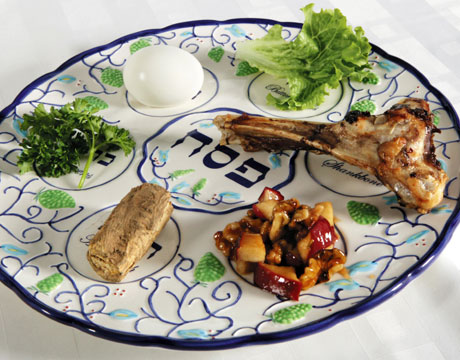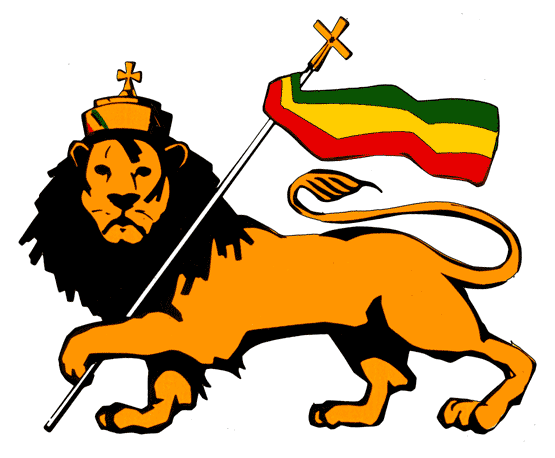 escape from their servitude in Egypt. Moses called for God’s help and he sent ten plagues upon the Egyptians, the last seven were supposed to not affect the slaves at all. They were turning water to blood, frogs, lice, disease that affected livestock, boils, hail, locusts, and the ninth was darkness. When God sent the tenth and final plague on the Egyptians, the death of the firstborn child, all of the Jewish families slaughtered a lamb and spread the blood on their door, thus the Angel of Death would Passover those homes. Passover is also known as the Pesach.
escape from their servitude in Egypt. Moses called for God’s help and he sent ten plagues upon the Egyptians, the last seven were supposed to not affect the slaves at all. They were turning water to blood, frogs, lice, disease that affected livestock, boils, hail, locusts, and the ninth was darkness. When God sent the tenth and final plague on the Egyptians, the death of the firstborn child, all of the Jewish families slaughtered a lamb and spread the blood on their door, thus the Angel of Death would Passover those homes. Passover is also known as the Pesach. Matzah- when the Jews fled from Egypt, they did not have time to allow their bread to leaven, leaving them with the flat bread known as Matzah. This includes “anything made from the five major grains (wheat, rye, barley, oats and spelt) that has not been completely cooked within 18 minutes after coming into contact with water.” Because of this, no leavened bread is eaten during the duration of Passover, which lasts seven or eight days. The extra day is added in preparation of many things. In case of discrepancies in the interpretation of the Jewish calendar, local calendars compared to the temple at Jerusalem and to allow travelers time to arrive, and in areas of danger, to prevent knowledge on the better day for enemies to attack.
Matzah- when the Jews fled from Egypt, they did not have time to allow their bread to leaven, leaving them with the flat bread known as Matzah. This includes “anything made from the five major grains (wheat, rye, barley, oats and spelt) that has not been completely cooked within 18 minutes after coming into contact with water.” Because of this, no leavened bread is eaten during the duration of Passover, which lasts seven or eight days. The extra day is added in preparation of many things. In case of discrepancies in the interpretation of the Jewish calendar, local calendars compared to the temple at Jerusalem and to allow travelers time to arrive, and in areas of danger, to prevent knowledge on the better day for enemies to attack. 
 Candles- in the Jewish tradition, the day begins and ends at sunset. The lighting of the candles symbolizes the change into a new day. They are lighted before the Seder begins and a blessing is recited.
Candles- in the Jewish tradition, the day begins and ends at sunset. The lighting of the candles symbolizes the change into a new day. They are lighted before the Seder begins and a blessing is recited.  Charoset- a combination of dates, apples, nuts, cinnamon, and wine that symbolizes the mortar the slaves of Egypt used in their labors.
Charoset- a combination of dates, apples, nuts, cinnamon, and wine that symbolizes the mortar the slaves of Egypt used in their labors. Saltwater- this represents the tears shed during the slaves' time in Egypt. The bitter herbs are dipped in the saltwater before being eaten.
Saltwater- this represents the tears shed during the slaves' time in Egypt. The bitter herbs are dipped in the saltwater before being eaten. the Seder to represent the four promises God made to the Israelites in their freedom from slavery.
the Seder to represent the four promises God made to the Israelites in their freedom from slavery. "I am the Lord, and I will bring you out from under the burdens of the Egyptians, and I will deliver you from their bondage, and I will redeem you with an out-stretched arm and with great acts of judgment, and I will take you for my people, and I will be your God; and you shall know that I am the Lord your God, who has brought you out from under the burdens of the Egyptians. And I will bring you into the land which I swore to give to Abraham, to Isaac, and to Jacob; I will give it to you for a possession. I am the Lord" (Exodus 6:6-8).
 Hand Washing- the hands are washed in preparation for the Seder, as a way of getting ready.
Hand Washing- the hands are washed in preparation for the Seder, as a way of getting ready.Breaking the Middle Matzah- The leader at the Seder
 breaks the middle piece of Matzah in half, the larger of the two pieces is set aside as the Afikkoman, which will be explained below. The smaller piece is returned to the table.
breaks the middle piece of Matzah in half, the larger of the two pieces is set aside as the Afikkoman, which will be explained below. The smaller piece is returned to the table.-"On all other nights, we eat either unleavened or leavened bread, but tonight we eat only -unleavened bread?"
-"On all other nights, we eat all kinds of vegetables, but tonight, we eat only bitter herbs?"
-"On all other nights, we do not dip [our food] even once, but tonight we dip twice?"
-"On all other nights, we eat either sitting or reclining, but tonight we only recline?"
 Afikkoman- This is the larger of the two pieces of Matzah broken earlier in the Seder. The piece is traditionally either hid by the parents for the children to find, and when they do, they are usually rewarded with some prize which varies. The children can also hide the Afikkoman for the adults to find. Sometimes it can be stolen during the meal by the children, who then demand a reward for it's return. This tradition is also aimed at keeping the children invested and excited about the Seder.
Afikkoman- This is the larger of the two pieces of Matzah broken earlier in the Seder. The piece is traditionally either hid by the parents for the children to find, and when they do, they are usually rewarded with some prize which varies. The children can also hide the Afikkoman for the adults to find. Sometimes it can be stolen during the meal by the children, who then demand a reward for it's return. This tradition is also aimed at keeping the children invested and excited about the Seder.  certain actions, such as hand washing that occurs during the Seder. There are
certain actions, such as hand washing that occurs during the Seder. There are also many other subtleties that can be followed in the Haggadah. There are songs, blessings, and other traditions that happen during the meal, as well as special foods that are traditionally eaten, such as gefilte fish (left) and matzo ball soup (right).
also many other subtleties that can be followed in the Haggadah. There are songs, blessings, and other traditions that happen during the meal, as well as special foods that are traditionally eaten, such as gefilte fish (left) and matzo ball soup (right). 




















